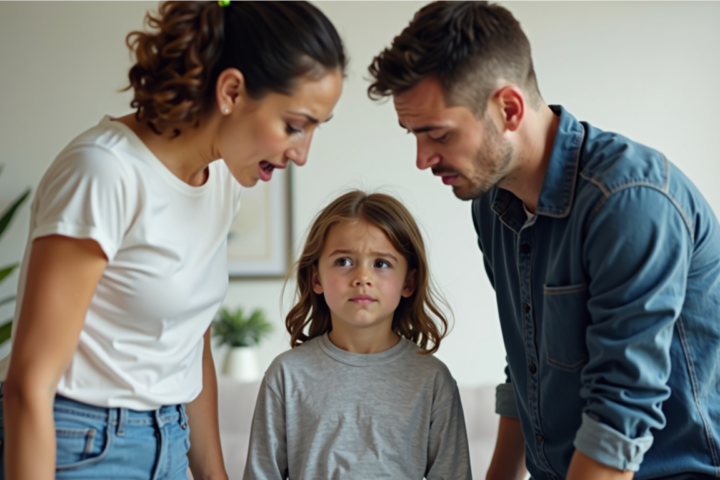You’re not wrong for feeling like you and your partner just… miss each other in conversation. You talk—but don’t feel heard. You listen—but somehow still feel miles apart. Over time, what started as small misfires can solidify into stuck patterns: avoidance, defensiveness, reactivity, or silent distance.
Communication in relationships isn’t just about words—it’s about connection, emotional safety, and the ability to repair after rupture.
Whether you’re trapped in a repeating argument or aching from long silences, this guide is designed to unpack those layers with compassion and clarity gently. You’ll learn why miscommunication is often rooted in old wounds or dysregulated nervous systems—not a lack of love—and, more importantly, how to reconnect.
Why Communication Is the Nervous System of Your Relationship
Every couple struggles with communication at some point. But beneath the surface of who said what lies a deeper biological reality: your nervous system is wired for connection and safety. Your brain shifts into survival mode when those needs feel threatened, even unintentionally.
When you’re misunderstood, your body doesn’t just feel annoyed. It feels unsafe. The result? Defensive reactions, shutdowns, or lashing out—all involuntary survival strategies. This isn’t logic. This is survival physiology.
Recent research from the Gottman Institute and Polyvagal Theory confirms what therapists have long seen in practice: emotionally attuned communication increases relationship satisfaction, strengthens attachment bonds, and lowers stress hormones. Your body literally relaxes when it feels heard and understood.
Key Takeaways:
- Communication is more than speaking and listening; it’s a neurobiological process of seeking safety.
- Poor communication often signals that one or both nervous systems are dysregulated.
- You can learn to recognize and repair communication breakdowns with the right tools and timing.
Common Communication Problems in Relationships
Miscommunication doesn’t always sound like shouting. Sometimes, it’s silence, a sigh, or a subtle retreat. These micro-moments shape our emotional climate far more than we realize.
Signs of Poor Communication
- Defensiveness: You feel attacked, so you guard instead of receive. It might sound like, “Well, you do it too.”
- Stonewalling: You emotionally shut down to avoid further conflict, often without realizing it.
- Criticism: You focus on your partner’s flaws rather than expressing needs. “You never help around here” instead of “I’m feeling overwhelmed.”
- Assumptions: Instead of clarifying, you interpret. “They didn’t text back—they must be mad.”
Common Triggers
- Stress or Burnout: Overwhelm depletes our capacity to stay present or patient.
- Attachment Wounds: Past experiences of abandonment or control can echo in present-day dynamics.
- Family of Origin Patterns: If vulnerability was unsafe growing up, you may avoid it now.
“What if this wasn’t about them—but about what your nervous system expects?”
These patterns are not moral failures. They are adaptations. And they can be unlearned.
5 Powerful Strategies to Improve Communication in Relationships
Healing how you talk to each other is not about mastering the perfect script. It’s about creating an emotional field where both people can soften, stay curious, and feel safe enough to be real.
1. Active Listening: Tuning In Beyond the Words
Most people listen to reply, but very few listen to understand. Active listening creates a felt sense of attunement—the emotional version of “I’m with you.”
Try this:
- Reflect: “What I’m hearing is that you felt hurt when I canceled.”
- Validate emotions: “That makes so much sense.”
- Ask follow-up questions: “What was the hardest part of that for you?”
“Let’s pause here together. What part of that felt hardest to say?”
2. Open-Ended Questions: Inviting Dialogue
Closed questions shut things down. Open questions invite depth.
Instead of “Did that upset you?” try:
- “What came up for you when that happened?”
- “What did you need in that moment?”
- “How did that land in your body?”
3. “I” Statements: Express Without Blame
Blame triggers defensiveness. Ownership opens doors.
- “You never listen.”
- “I feel dismissed when I’m interrupted. I need space to finish my thought.”
This isn’t about sugarcoating. It’s about creating space for vulnerability to land.
4. Timing and Environment Matter
You can’t build a bridge in the middle of an emotional flood. Choose timing intentionally.
- Avoid triggering times (late nights, before work).
- Create a ritual check-in (e.g., “10-minute tea talk” every Thursday).
- Signal readiness: “Hey, I want to connect. Is now a good time?”
5. Non-Verbal Communication: Watch What Isn’t Said
Your body speaks before your words do.
- Maintain soft eye contact.
- Use an open, relaxed posture.
- Monitor your tone—is it harsh or warm?
“Your body remembers past ruptures when they raise their voice. That doesn’t mean you’re broken. It means you’re human.”
Communication Exercises That Actually Help
20-Minute Check-In
Each person gets 10 minutes to speak uninterrupted. Then, reflect back on what you heard. This builds empathy and regulation.
Emotional Charades
Act out feelings non-verbally. It boosts emotional literacy and adds playfulness to your practice.
High-Low-Connection Ritual
Every evening or weekend, each partner shares:
- One high point
- One low point
- One moment, they felt connected (or disconnected)
Consistency builds trust. Rituals create safety.
When to Seek Professional Help
Therapy isn’t failure. It’s an investment in fluency.
Signs It’s Time for Help
- You repeat the same fight in different costumes
- Emotional safety feels distant
- Honest expression feels too risky
- You feel more like roommates than partners
Benefits of Couples Therapy
- A trained presence to de-escalate stuck dynamics
- Co-regulation and somatic tools
- Understanding your unique communication blueprints
- Repairing trust through guided vulnerability
“This pattern isn’t serving you anymore. And you don’t have to carry it alone.”
Communication Healing Is a Spiral, Not a Straight Line
You’ll have days when you show up with softness and skill. You’ll have others where your protector parts take the mic. That doesn’t mean you’re failing.
It means you’re in the process.
Every rupture is an opportunity for repair. Every misstep can become a moment of reconnection. Your relationship doesn’t need perfection. It requires safety, presence, and willingness.
“You get to take up space in this relationship.”
FAQ: Communication in Relationships
How much communication is normal in a relationship?
There’s no universal quota. What matters is mutual satisfaction. Do both of you feel emotionally attended to? Can you bring your full self to the table?
How do you fix a lack of communication in a relationship?
Start with safety, not solutions. Rebuild small rituals of checking in. Use tools like reflective listening and emotion naming. Seek support if cycles feel too rigid to shift alone.
What are the best communication techniques for couples?
The best techniques are the ones that feel safe, clear, and connective. Key tools include:
- Active listening
- “I” statements
- Nervous system awareness
- Timed check-ins
- Somatic tracking
How do you handle communication issues during conflict?
Regulate first. Reconnect later. If you feel flooded, take a 20-minute break. Use breath, grounding, or movement. Return with curiosity, not combat.
Want to Deepen This Work?
- Subscribe for weekly insights on relationships, communication, and somatic healing.
- Need a therapist? Find a couples counselor near you.
- Explore more:
SEO Title:
Effective Communication in Relationships: Strategies That Actually Work
Meta Description (SEO Optimized):
Discover research-backed strategies to improve communication in relationships. Learn tools for emotional safety, connection, and better conflict repair.
External Resources:











